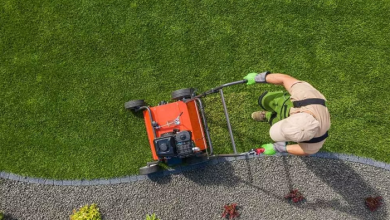
Dreaming of a little Mediterranean magic in your living room or balcony? Olive trees aren’t just symbols of peace – they’re hardy, elegant, and surprisingly easy to grow at home. Growing olive trees at home can be a rewarding experience, whether you’re cultivating them indoors or outdoors.
This beginner-friendly guide will walk you through every step of growing a happy, healthy olive tree. Let’s get started.
History and significance of olive trees
Before we tell you how to grow an olive tree in your home, let’s take a look at the history and significance of these amazing trees.
Olive trees have been revered for thousands of years, tracing their roots back to ancient Mediterranean civilizations.
In ancient Greece, olive trees were significant. They were sacred to the goddess Athena, and winning athletes in the Olympic Games were given crowns made from olive branches. Olive oil was used for cooking, lighting lamps, and even for medicine.
The Romans helped spread olive trees to other parts of Europe and North Africa, where they still grow today.
Olive trees are more than just plants—they are symbols of peace, strength, and longevity. They appear in many religious stories and are often seen as symbols of peace (like the olive branch in the United Nations logo).
Today, olive trees are still cherished for their beauty and importance in Mediterranean cultures, where they provide olives for food and olive oil for cooking.
How to grow an olive tree at home
Now that you know more about the history and symbolism of olive trees, you probably want to try and grow them at your home even more. So, let’s walk you through each step slowly.
1. Select the right olive tree variety.
Before you jump right in, you should know that there are numerous varieties of olive trees. First, you should decide where you want to grow your tree – indoors or outdoors.
If you decide on the indoors, you should choose dwarf or compact types like ‘Little Ollie’ or Arbequina, which are better suited for indoor environments.
On the other hand, if your plan is to grow the tree outdoors, opt for varieties suited to your climate. Mediterranean climates are ideal, but hardy trees like Arbequina or Koroneiki can thrive in cooler regions.
Regardless of which variety you go for, know that any olive tree is beautiful and low-maintenance. It will add a rustic and timeless aesthetic to almost any place, indoor and outdoor.
2. Indoor planting
If you’ve chosen to plant an indoor olive tree, you will need to choose the right container and soil.
Ideally, you want to use a large enough pot (start with a 12–16-inch pot) with drainage holes. Terracotta pots are recommended for better aeration.
As for the soil, use a sandy soil or well-draining mix like cactus or citrus soil. You can mix in perlite or coarse sand for extra drainage.
When planting the tree, remove it from its nursery container and gently loosen its roots. Plant it at the same depth as in its original container and water thoroughly.
3. Outdoor planting
In case you want to plant your tree outdoors, here is what you need to know. The location is key when planting the olive tree in the garden. Select a sunny, sheltered spot with well-draining soil. South-facing areas with protection from frost work best.
Once you have the location picked out, prepare the soil. If you have heavy clay soil in your garden, mix in grit or gravel to improve drainage.
Then, dig a hole twice as wide and deep as the root ball. Place the tree so the top of the root ball is level with the surrounding soil. Backfill the hole, tamp down gently, water thoroughly, and add mulch to retain moisture. And that’s it.
4. Watering and humidity
Olive trees are drought-tolerant but need consistent care when young. Allow the top few inches of soil to dry out between waterings to avoid overwatering.
Just like with every plant, reduce watering in cooler months. Don’t let water sit in the tray – roots hate wet feet.
Indoor trees might benefit from occasional misting or a humidity tray if the air is dry. The outdoor trees generally require less frequent watering than potted ones.
5. Light requirements
Olive trees require at least 6 to 8 hours of direct sunlight daily. As mentioned, if planting outdoors, place them in the sunniest spot available.
Indoors, position them near south-facing windows or use grow lights if natural light is insufficient. In case natural light is limited, consider using a grow light.
6. Pruning and maintenance
As mentioned, olive trees are pretty low-maintenance. You should prune your olive tree annually. Prune lightly in early spring to shape the tree and remove dead or damaged branches. For young trees, select 4 to 5 scaffold branches during planting to encourage strong growth.
For potted trees, keep growth compact and balanced. Thin out the center for airflow since this helps prevent mildew and pests.
7. Fruiting and pollination
Most homegrown olive trees start producing fruit in 3 to 5 years. Some varieties are self-pollinating, but fruit yield improves with a second tree or hand pollination.
Indoors, you can use a soft brush to move pollen between flowers.
8. Fertilizing
Ideally, you want to apply slow-release fertilizer twice a year. Once in spring and once in fall to promote healthy growth.
9. Pests and problems
Olive trees are generally tough, but watch out for scale insects, olive fruit flies, and moths. Regular inspections and organic pest control methods can help manage infestations. If necessary, treat with neem oil, insecticidal soap, or a gentle wipe with a damp cloth.
Additionally, ensure proper drainage to prevent root rot and yellowing leaves.
10. Winter protection
During winter, when the temperatures fall below 25°F (-4°C), move potted olive trees indoors to unheated conservatories or greenhouses.
As for outdoor trees, they should be protected with fleece wraps or planted near warm walls for insulation.
Conclusion
Olive trees are a long-term relationship, not a fling. But give them sun, patience, and love – and they’ll reward you with timeless beauty and maybe even your own mini olive harvest one day.



